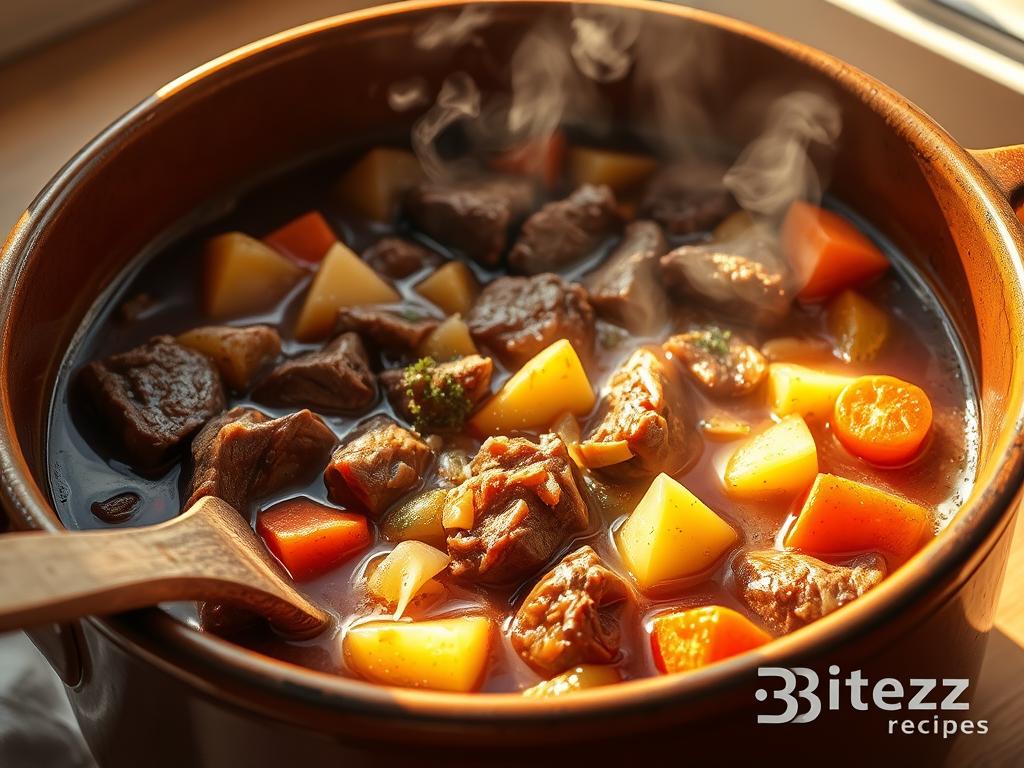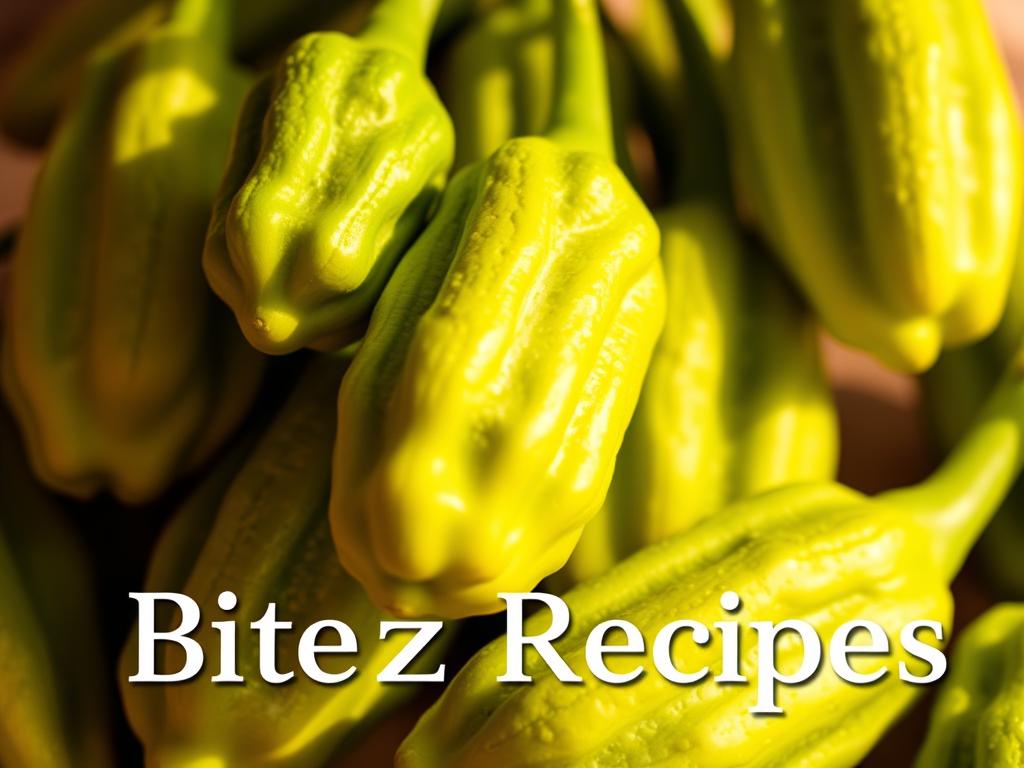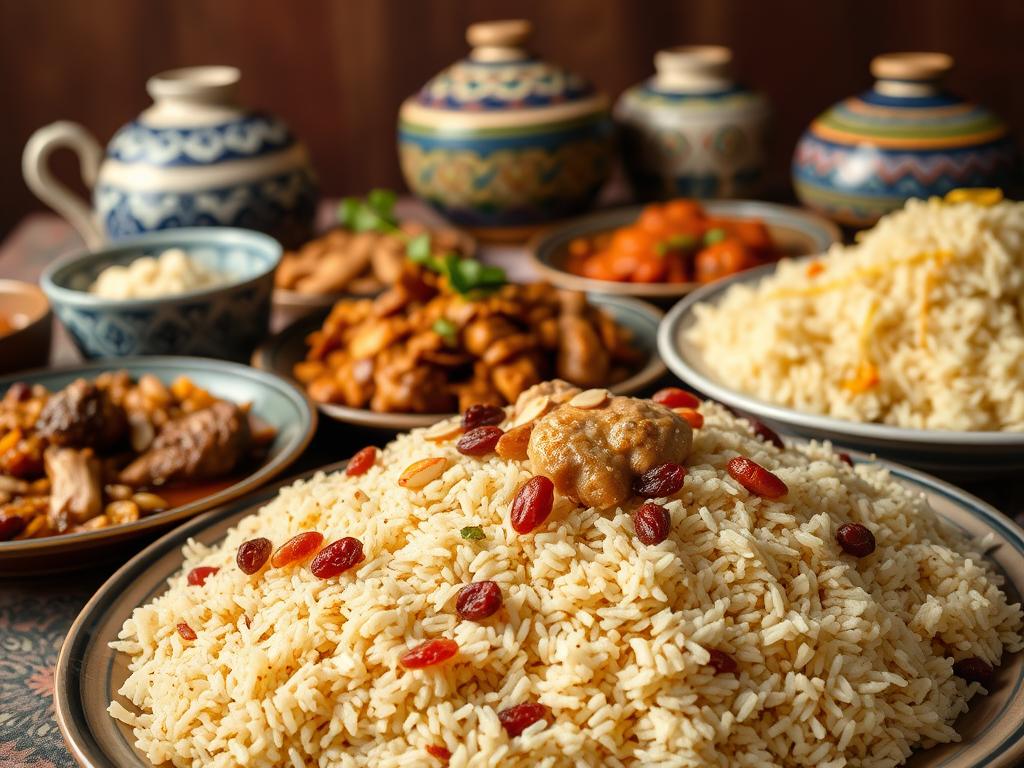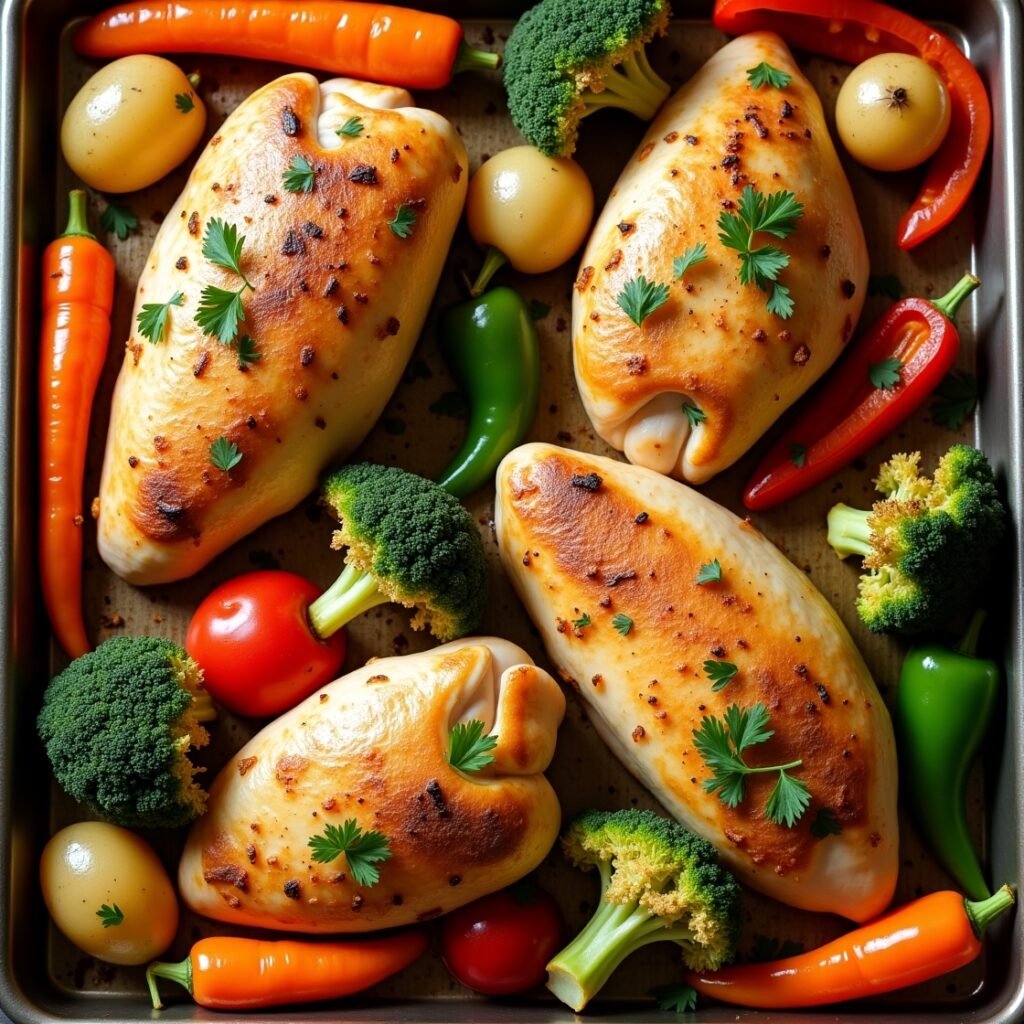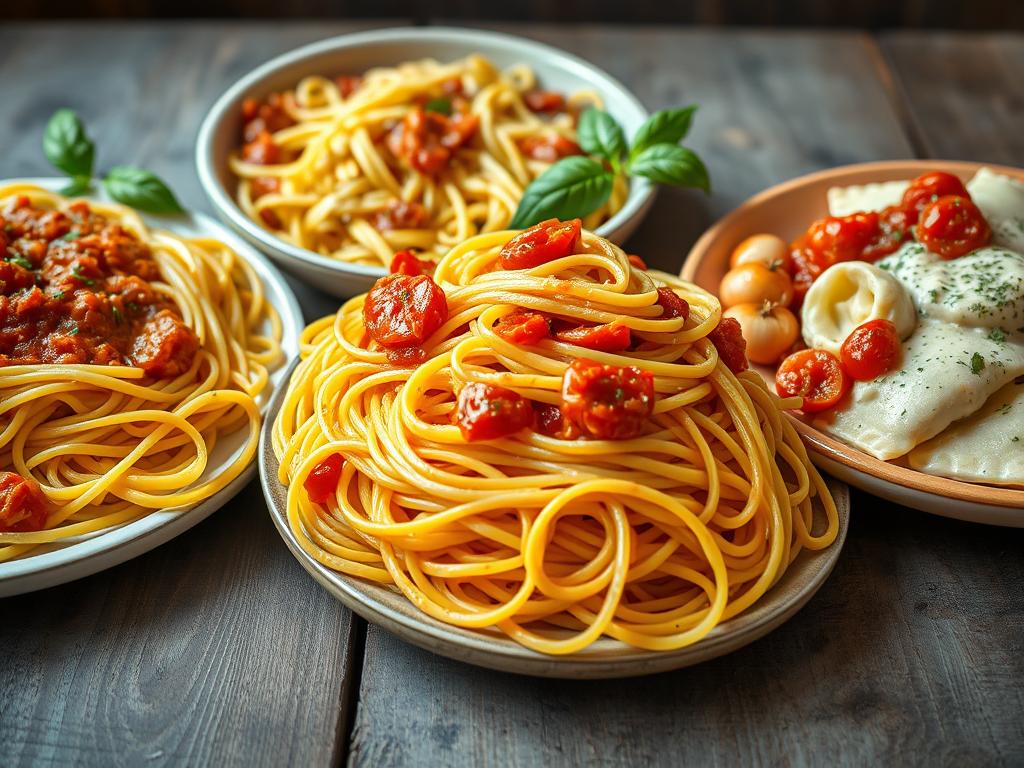Achieving the perfect medium steak temp is not a guess. It’s about using a recipe for juicy, delicious steaks. Grilling or pan-frying does not matter if you know the proper temperature. This guide will instruct you in chef-approved techniques for doing it every time.
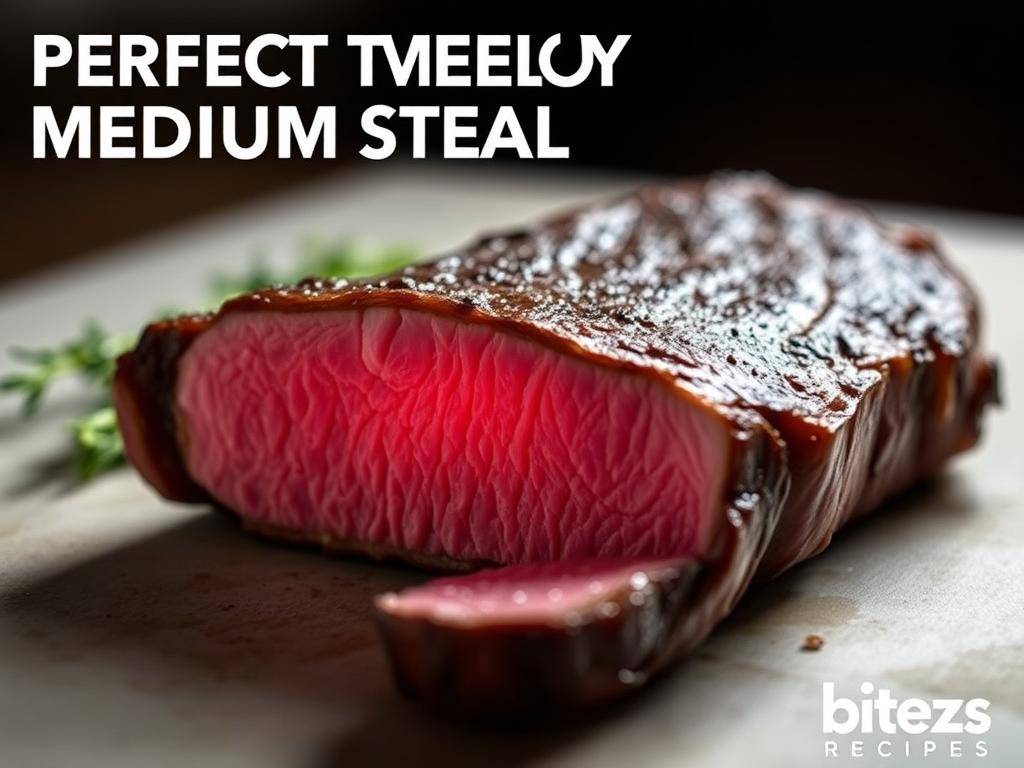
Bitez Recipes – A close-up temperature guide to the ideal medium steak, highlighting the perfect internal color and texture. High-contrast, crisp lighting highlights the cross-section of the steak, showing a warm pink interior ringed by a delicate brown crust. Set against a clean, white surface, the steak is the main focus. Shot with a shallow depth of field, the focus pins the viewer’s eye on the all-important temperature information. An authoritative, foodie-inspired guide that will teach and motivate home cooks to master medium steak perfection.
Key Takeaways
- Learn the exact medium steak temp range (130–135°F) for maximum tenderness and flavor.
- Find out why a meat thermometer is a must for accuracy.
- Learn how resting your steak enhances juiciness and texture.
- Find out how to grill and pan-sear with the steak temperature guide.
- Master the techniques chefs use to get consistent results at home.
Learning About Steak Doneness: From Rare to Well Done
Steak doneness stages alter the flavor and texture of your dish. No matter if you prefer a meaty rare or well-done steak, learning how temperature impacts meat is essential. So, let’s get to the science behind meat temperature and texture and find out how to determine if your steak is just perfect.
The Science Behind Meat Temperature and Texture
Heat transforms meat in three fundamental manners. One, proteins constrict as it heats up, dehydrating it. Two, fats dissolve, giving it taste. Three, connective tissues become more gelatinous, rendering it more tender.
Rare steak (120–125°F) remains tender with a reddish interior. Medium (130–135°F) is tough but moist. Well-done (160°F+) is dense and fully done. A steak doneness chart provides the measurement for these processes.
Why Medium Doneness is a Hit with Steak Enthusiasts
Medium steak is one many people can’t resist. It’s grilled to 130–135°F, so proteins are still firm but not hard and dry. The exterior is crusty, and the interior is soft.
It is ideal for individuals who desire texture and taste. Restaurateurs tend to recommend medium for its balance. It is acceptable to many palates.
Visual Guide to Steak Levels of Doneness
It takes practice to learn to check for doneness by eye. Rare steaks are bright red in the center with pink edges. Medium steaks are warm, amber in the center. Well-done cuts are grayish-brown throughout.
It’s simple using a steak doneness chart (such as the one below). It assists in correlating color, temperature, and texture.
The Ideal Medium Steak Temperature: What You Should Know
Knowing the ideal medium steak temperature is all about figures. A medium steak is optimal at an internal temperature of 140°F to 145°F. This provides a tender pink interior with a firm perimeter, ideal for steak enthusiasts.
Carryover cooking is crucial here. Even once it’s removed from the heat, steak temperatures can increase 5–10°F. So, remove it at 135°F–140°F and let it rest. This last increase ensures the medium steak internal temperature is perfect, without overcooking.
Key factors to adjust:
- Thickness: Thicker cuts require lower initial temperatures to prevent dryness.
- Cut type: Fatty steaks such as ribeye hold heat longer than lean filet mignon.
- Resting time: 5–10 minutes allows juices to redistribute, keeping meat moist.
Pro tip: Be precise with a digital thermometer. Don’t guess by touch—it’s the only way to achieve the perfect medium steak temperature each time. Patience and precision equal no more overcooked or undercooked steaks!
Essential Tools for Achieving Precise Steak Temperatures
Mastering steak temperatures begins with the tools. Take a look at what you’ll need to prepare the ideal steak cooking temperature each time.

A carefully composed still life of the necessary tools for obtaining accurate steak temperatures. In the front, a high-end digital meat thermometer with a shiny chrome finish on a butcher block. Beside it, a keen boning knife with a shiny stainless steel blade. In the middle ground, a collection of Bitez Recipes steak temperature cards, each displaying the unique colors and textures of rare, medium-rare, medium, medium-well, and well-done steaks. The background is softly illuminated, picking up the warm grains of the oak wood surface, setting the mood for the discerning home cook to be warm and inviting.
Selecting the Best Meat Thermometer
Precision matters. Instant-read digital thermometers such as the Thermoworks MK4 or Taylor Precision Plus provide rapid, precise readings. For effortless monitoring, consider wireless thermometers such as the Weber iGrill 3. Select a probe that penetrates meat quickly without causing harm.
“A good thermometer is the only sure way to know your steak’s done.” – Pro chefs concur: avoid guesswork.
Other Ways to Check Doneness
- Touch test: Press on the surface of the steak; medium will feel like the pad of your thumb on your cheek.
- Visual cues: Juices that are released when cutting indicate doneness (red = rare, pink = medium, clear = well-done).
- Timing: Employ time guidelines as approximations, not a replacement for thermometers.
These techniques are fine when you don’t have a thermometer. But thermometers are the best option.
Setting Up Your Cooking Station for Success
Organize your workspace. Place the thermometer within reach, preheat pans or grills, and have a cutting board available. Use a notepad to record temperatures and times. Adequate lighting aids in reading thermometer screens.
Excellent tools and an intelligent setup make you a steak expert. If you use a high-quality thermometer or learn to check by hand, these steps ensure success each time.
Step-by-Step Instructions to Cooking a Medium Steak
Discover the way to cook a medium steak using this easy guide. Prepare to get the ideal medium steak with these steps.

A tender, medium-rare steak shines under soft, golden light, highlighting a flawless sear and a rosy, juicy center. The Bitez Recipes logo is tastefully imprinted on the plate, surrounded by a distressed, wooden border. The image conjures a warm, welcoming mood, inviting the viewer to enjoy each morsel of this masterfully cooked, Bitez Recipes medium steak.
Preparation Techniques for Even Cooking
Begin with these prep steps:
- Let steak stand at room temperature for 30 minutes prior to cooking.
- Dry steak with paper towels for a crunchy crust.
- Season with pepper and salt 30 minutes in advance for flavor penetration.
- Trim excess fat for uniform heat conduction.
Cooking Techniques: Grilling, Pan-Searing, and Oven Finishing
Select your preferred technique using this comparison:
| Method | Heat | Time | Key Tips |
|---|---|---|---|
| Grilling | 400–450°F | 4–5 mins/side | Use indirect heat for thicker cuts. |
| Pan-Searing | High heat (cast iron skillet) | 3–4 mins/side | Baste with butter for extra flavor. |
| Oven Finish | 425°F oven | 8–10 mins total | Use a meat thermometer to check 130–135°F. |
Resting Your Steak: The Pivotal Last Step
Rest your steak to seal in juices:
- Move steak to cutting board once cooked.
- Loosely cover with foil and rest 5–10 minutes.
- Cut against the grain to maximize tenderness.
Resting keeps juices from gathering—secret to the perfect medium steak.
Medium vs. Medium Rare: Knowing the Difference
The decision of medium rare vs medium steak is one of texture and temperature. Medium rare steak temperature rarely breaks 130–135°F. Medium is 140–145°F. That small variation creates a huge difference.
- Temperature: Medium rare is nearer raw, retaining more juices.
- Color: Medium rare has a red center. Medium is paler, with a pinkish color.
- Texture: Medium rare is springy and tender. Medium is firmer with less spring.

two juicy steaks, one medium rare and one medium, lying on a rustic wooden platter. The medium rare steak, lightly seared, has a warm, pink interior, while the medium steak has a slightly firmer, light-brown interior. Soft, directional lighting creates a warm glow, emphasizing the different textures and temperatures of these perfectly cooked cuts. In the background, the Bitez Recipes logo quietly emerges, setting the culinary expertise behind this visual presentation of the contrast between medium rare and medium steak doneness.
Lighting can be deceptive. Restaurant lighting could make a medium steak appear rarer. Always believe your thermometer rather than the way it appears. Chefs recommend ordering “medium” if you prefer less pink but still tender meat.
“The border between medium rare and medium is individual—like a decision between silk or linen,” explains James Beard Award-winning chef Amanda Brooks.
Keep in mind, the internal temperature of the steak matters. For medium rare steak temperature, use 130–135°F. For firmer meat, use higher. Your future steak order just got easier.
Common Errors That Keep Perfect Medium Steak Temperature at Bay
Accomplishing the medium steak temp is all about not making common errors. A small mistake is enough to toughen your steak and make it taste horrible. Below are the most common mistakes to avoid:
Temperature Misreads and How to Steer Clear of Them
- Thermometer placement errors: Always insert the probe in the thickest area. Avoid bones and fatty edges.
- Ignoring carryover heat: Remove the steak 5-10°F short of your medium steak temperature target. Allow it to rest to complete cooking.
- Visual guesswork: Use thermometers, not color or juices alone. Various cuts require different temperatures.
The Effect of Steak Thickness on Cooking Time
Thick steaks take longer to be cooked through. Here is a guideline:
| Thickness | Cooking Time | Target Temp |
|---|---|---|
| 1” | 6-8 mins | 130°F |
| 1.5” | 8-10 mins | 125-130°F |
| 2”+ | 10-12 mins | 120-125°F |
Why Resting Time Matters for Final Doneness
Resting is crucial—it allows the heat to radiate. A 2″ steak can rise 10°F during resting. Pull it at 125°F if you desire 135°F medium steak temperature. Rest it for 5-10 mins to cook perfectly without overcooking.
How to Master Medium Steak Temp for Various Cuts
Each steak cut is unique. You have to vary your cooking to achieve the ideal medium steak for each.
Ribeye and Strip Steak Techniques
The ribeye and strip steaks are optimal at 135°F. Here is how to cook them:
- Slow-roast, then sear for a crisper crust.
- Monitor temp frequently to prevent overcooking.
Filet Mignon and Tender Cuts
Tender cuts such as filet mignon require special attention. For the ideal medium steak:
- Begin at 125°F—carryover heat elevates it to 130-135°F.
- Cook in cast-iron for uniform cooking.
Bolder Cuts That Excel at Medium Temperature
Flank or hanger steaks improve at medium doneness:
- Marinate overnight to relax fibers.
- Cook to 135°F for tender finish.
| Cut Type | Method | Ideal Temp (°F) |
|---|---|---|
| Ribeye/Strip | Reverse Sear | 135 |
| Filet Mignon | Cast-Iron Sear | 130-135 |
| Flank/Hanger | Marinate + Oven | 135 |
Restaurant Secrets to Having Consistently Flawless Medium Steaks
Professional chefs employ precise techniques to ensure each steak is perfectly cooked. Below are five steak temperature guide secrets top restaurants use to achieve perfect steaks:
“The difference between good and great is attention to detail at every step,” says Chef Marco Rivera of Michelin-starred Cut Steakhouse.
- Prep like a pro: Bring steaks to room temperature before cooking for even cooking.
- High-heat start: Sear at 700°F for 1-2 minutes per side to preserve juices.
- Touch test mastery: Chefs apply palm comparisons—medium steak is about the base of your thumb (see table below).
- Rest strategically: Allow steaks to rest 8-10 minutes on a wire rack to distribute juices evenly.
| Method | Touch Test | Thermometer |
|---|---|---|
| Accuracy | Variable (depends on practice) | 99% precise |
| Time | Quick checks | 5-second readings |
| Best Use | Seasoned chefs | Home cooks |
Use these techniques with a how-to-cook medium steak method. Top with butter-basting: introduce unsalted butter, garlic, and thyme in the final 2 minutes. Serve at 130–135°F for optimal tenderness. Professional kitchens maintain steaks at the ready at 140°F. Experiment with wrapping rested meat in foil for 10 minutes before serving. These techniques turn your home-cooked meals into restaurant-quality fare.
Conclusion: Enjoying the Perfect Medium Steak Every Time
Learning to cook steak to your own preference is the key to having juicy, delicious dinners. Whether you enjoy medium steak or experiment with medium rare steak, an accurate thermometer is the tool you’ll want to have. Medium steaks are cooked through to 140–145°F. Rare and well-done steaks are up to you.
Begin with simple cuts such as ribeye or strip steak to improve. Always consider carryover heat and allow your steak to rest after cooking. Thin cuts can be excellent with searing quickly, and thicker cuts fare well in the oven.
Experiment with different cuts and doneness levels, but not with variations. A thermometer never lies, and resting the steak retains juices within. Whether you enjoy medium’s deep flavor or medium rare steak, follow these tips and you will be a pro. Impress the family with success and savor every delectable bite.
FAQ
What is the perfect medium steak temperature?
The ideal medium steak temperature is 140°F to 145°F. It provides a warm pink center. It has excellent texture and taste.
How is medium rare steak temperature different from medium?
Medium rare steak is cooked to 130°F to 135°F. Medium steak is cooked to 140°F to 145°F. Medium rare has a cooler, red center. Medium has a warmer pink center.
May I use a steak doneness chart to get the ideal cook?
You bet! A steak doneness chart assists you in measuring internal temperatures. It’s important for precise cooking outcomes.
What equipment do I require to measure steak cooking temperatures accurately?
A high-quality meat thermometer is your best bet. It may be an instant-read or digital probe thermometer. It will help you achieve the desired doneness levels.
How does the thickness of the steak influence medium steak internal temperature?
Thickness impacts cooking time and end internal temperature significantly. Thicker cuts require more cooking. They demand attention so they don’t overcook.
What are typical errors that can hinder attaining a perfect medium steak?
Typical errors include miscalculating temperature and not taking carryover cooking into account. Not resting the steak after cooking is also likely to provide inconsistent outcomes.
Can I check for steak doneness in other ways if I don’t have a thermometer?
Yes! You can do the touch test or examine color and juices. But a thermometer is best.
How do I rest my steak correctly after it’s cooked?
Let your steak rest 5-10 minutes after cooking. This redistributes juices. Covering loosely with foil will help retain heat.
What are some cooking techniques to get the ideal medium steak temperature?
Grilling, pan-frying, and finishing in the oven are all favorite options. All of these options provide various ways to manage heat and achieve even cooking.
Are there various tips for cooking different kinds of steak to medium doneness?
Yes! Various cuts such as ribeye and filet mignon are cooked using special techniques. Ribeyes are helped by having fat rendered well. Filets are delicate and should be monitored to prevent dryness.
How do I ensure my steak cooking ability is on par with a restaurant chef?
Learn techniques such as timing and working with high-quality cooking surfaces. Constantly testing for doneness will allow you to produce restaurant-quality steaks at home!


